Travel Guide, Ha Giang Loop
Ha Giang vs Sapa: Where Should You Go For The Next Adventure
When it comes to exploring the majestic beauty of Vietnam’s northern highlands, the debate often narrows down to two breathtaking destinations: Ha Giang vs Sapa. While they share some similarities in their geographic and cultural makeup, each offers a distinct experience that caters to different tastes and preferences. This comprehensive comparison between Ha Giang and Sapa will delve into various aspects such as their geography, cultural experiences, tourist attractions, accessibility, and accommodation options. Whether you are an adventure seeker, a culture enthusiast, or simply in search of breathtaking scenery, this guide will help you decide which destination aligns best with your travel aspirations.
Geography and Landscape
Sapa
Sapa is situated at an altitude of about 1,500 meters above sea level, nestled in the Hoang Lien Son mountain range, which includes Fansipan, the highest peak in Vietnam. This elevated position contributes to Sapa’s cool and misty climate, a distinct contrast to the tropical weather found in much of Southeast Asia.
The geography of Sapa is characterized by its stunning terraced rice fields, which have been meticulously carved into the mountainsides over centuries by local ethnic minorities, particularly the H’Mong and the Dao. These terraces, especially during the planting and harvesting seasons, present a vivid green patchwork that is both aesthetically beautiful and a testament to the agricultural ingenuity of the local people.
Sapa’s landscape is also marked by its lush valleys, rolling hills, and dense bamboo forests. The region is dotted with small villages, connected by a network of trails that weave through the countryside, offering breathtaking views and opportunities to explore the natural beauty of the area. The presence of several streams and waterfalls adds to the idyllic nature of Sapa’s landscape.
Ha Giang
Ha Giang is less developed and more remote compared to Sapa, contributing to its raw and untouched beauty. Ha Giang’s landscape is dominated by the Dong Van Karst Plateau Geopark, recognized by UNESCO for its striking geological formations, including towering limestone peaks, deep canyons, and expansive limestone plateaus.
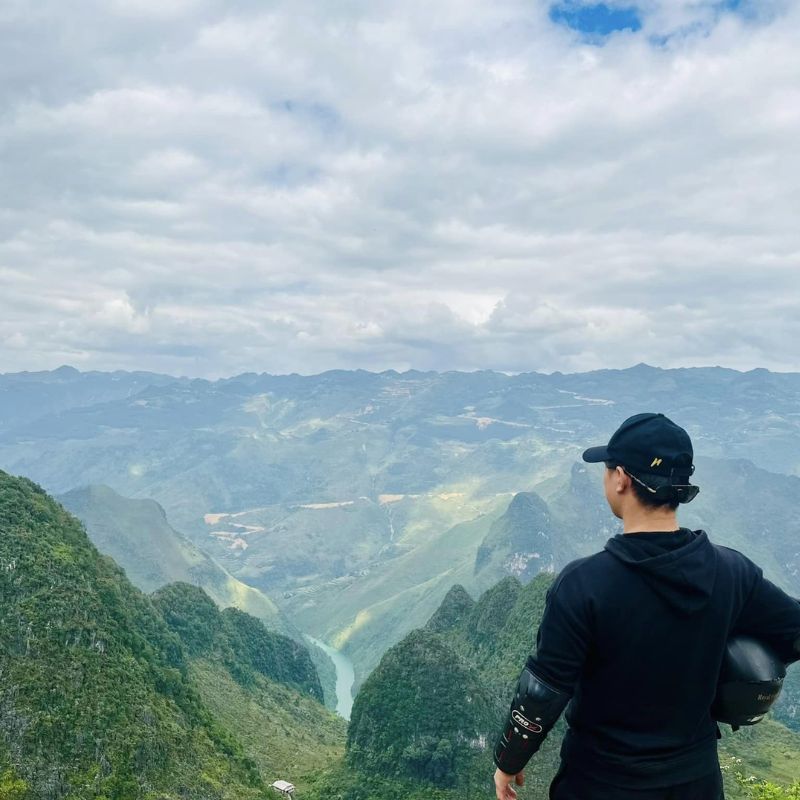
One of the most notable features of Ha Giang’s geography is the Ma Pi Leng Pass, often regarded as one of the most beautiful mountain passes in Vietnam. This pass offers awe-inspiring views of steep hills, deep valleys, and the winding Nho Que River below, making it a highlight for travelers exploring the region.
The area’s high altitude results in significant climate variation, with cool temperatures in the higher regions. Ha Giang’s landscape is less cultivated than Sapa’s, with more natural forests and less extensive agricultural terracing. The region’s biodiversity is rich, with many unique flora and fauna species found in its varied habitats, from lowland forests to high mountainous areas.
Convenience of the Route
Both located in the Northern mountainous region, but thanks to rapid development, the roads in Sapa have become more convenient and easier to traverse. Traveling to various attractions is no longer a concern for tourists. The roads are flat, easy to navigate, and transportation operates conveniently.
In stark contrast to Sapa, Ha Giang has many winding mountain passes. This characteristic satisfies the passion for conquering and exploring among the younger generation. A flat Sapa doesn’t meet the desires of adventure seekers. However, the challenging mountainous roads, though dangerous, fulfill the aspirations of those seeking an adventurous journey. Yet, these difficult routes also result in longer travel times to reach different destinations, representing a drawback of the area.
Cultural Experiences
Sapa
Sapa, nestled in the northern mountains of Vietnam, is a melting pot of cultural diversity, primarily known for its ethnic minority communities such as the H’Mong, Dao, and Tay. Visitors to Sapa can immerse themselves in the local way of life by visiting nearby villages like Cat Cat and Ta Phin, where traditional customs and crafts are on full display. The region is also famous for its colorful markets, such as the Bac Ha Market, bustling with ethnic minority groups dressed in their traditional attire, selling handicrafts, textiles, and local produce.
While Sapa’s cultural scene is somewhat adapted to tourism, it still offers a glimpse into the highland cultures of Vietnam. The town hosts various cultural shows and workshops that provide insights into the local folklore, music, and dance. One unique aspect of Sapa’s culture is the Love Market, a traditional gathering where young locals meet and express their affection through songs and dances, although this has become more of a tourist attraction in recent times.
Ha Giang

In contrast, Ha Giang offers a more unadulterated cultural experience. This remote region is home to a variety of ethnic groups, including the H’Mong, Tay, Lo Lo, and Giay, each with their distinct customs and lifestyles. Ha Giang’s cultural richness is most visible in its vibrant festivals and traditional markets. The Dong Van market, held every Sunday, is a kaleidoscope of colors and activities, where locals come to trade goods, socialize, and showcase their cultural heritage.
Unlike Sapa, Ha Giang’s cultural interactions are less influenced by tourism and more rooted in everyday life. Visitors have the opportunity to stay in traditional homestays, offering a genuine insight into the daily routines and customs of the local people. The rugged landscape of Ha Giang not only adds to its physical appeal but also shapes the cultural identity of its inhabitants, making it a profound destination for those seeking an authentic cultural immersion in Vietnam’s northern highlands.
Tourist Attractions and Activities
Sapa
Sapa, renowned for its picturesque landscapes, offers a variety of tourist attractions and activities that cater to a wide range of interests. The most iconic attraction is the trekking experience through the stunning terraced rice fields that adorn the hillsides, particularly in the Muong Hoa Valley. These treks vary in difficulty, appealing to both casual walkers and more serious hikers, and often include visits to local villages where one can witness the daily life and traditions of the ethnic communities.
The ascent to Fansipan, known as the “Roof of Indochina,” is a highlight for many. Accessible either by a challenging hike or a cable car ride, the summit offers breathtaking views of the surrounding mountains and valleys. Another notable attraction is the Silver Waterfall, located near the main town, providing a scenic spot for relaxation and photography.
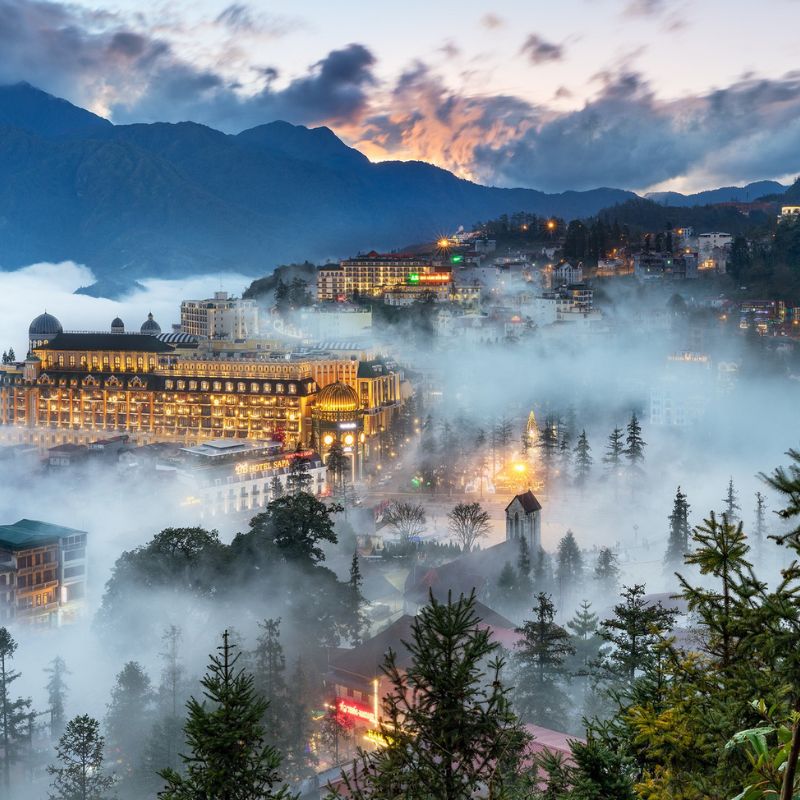
For cultural enthusiasts, the Sapa Market is a vibrant hub of activity where local artisans sell handicrafts, traditional clothing, and souvenirs. The nearby Cat Cat village, easily accessible from Sapa town, is a popular spot for experiencing traditional H’Mong culture, including their architecture, customs, and daily routines.
Additionally, Sapa offers various leisure activities like mountain biking and motorbike tours for those seeking adventure. The town itself, with its French colonial influence, is charming, featuring a variety of restaurants, cafes, and shops, making it a comfortable base for exploring the region’s natural and cultural wonders.
Ha Giang
Ha Giang, on the other hand, is a paradise for adventure seekers and nature lovers. The region is most famous for the Ha Giang Loop, a breathtaking motorbike journey through some of Vietnam’s most dramatic landscapes. This journey takes riders through winding roads, past towering mountains, deep valleys, and through remote villages, offering an unparalleled adventure experience.
Key natural attractions include the Dong Van Karst Plateau Geopark, a UNESCO-recognized site, featuring unique limestone formations, deep canyons, and pristine natural environments. The Ma Pi Leng Pass, part of the loop, is particularly renowned for its stunning panoramic views of the Nho Que River and the surrounding mountains.
Cultural attractions are also abundant in Ha Giang. The Vuong Family’s Palace, also known as the Hmong King’s Palace, is a historical site that offers insights into the life of a powerful Hmong family in the early 20th century. The Lung Cu Flag Tower, symbolizing the northernmost point of Vietnam, offers not only historical significance but also spectacular views of the region.
Festivals in Ha Giang, such as the Tam Giac Mach (Buckwheat) Flower Festival and the Lunar New Year celebrations, provide visitors with the opportunity to experience local customs, cuisine, and festivities. For those interested in the local way of life, there are numerous opportunities for homestays in traditional houses, where visitors can immerse themselves in the daily life and culture of the indigenous communities.
Accessibility and Accommodation
Sapa
Sapa is relatively accessible compared to many highland regions in Vietnam. It can be reached from Hanoi, the capital city, by various means of transportation. The most popular way is the scenic train journey to Lao Cai, followed by a short bus or taxi ride to Sapa town. This train journey offers comfortable sleeper cabins and beautiful views of the countryside. For a quicker option, there are direct bus services from Hanoi to Sapa, including luxury buses with comfortable seats and amenities.
In terms of accommodation, Sapa caters to a wide range of budgets and preferences. The town has seen significant development in tourism infrastructure over the years. Visitors can choose from luxury resorts, mid-range hotels, budget hostels, and even homestays in nearby villages. Many of these accommodations offer stunning views of the surrounding mountains and rice terraces. Sapa’s hospitality sector is well-equipped to cater to international tourists, with many staff members fluent in English and other languages, adding to the convenience for travelers.
Ha Giang
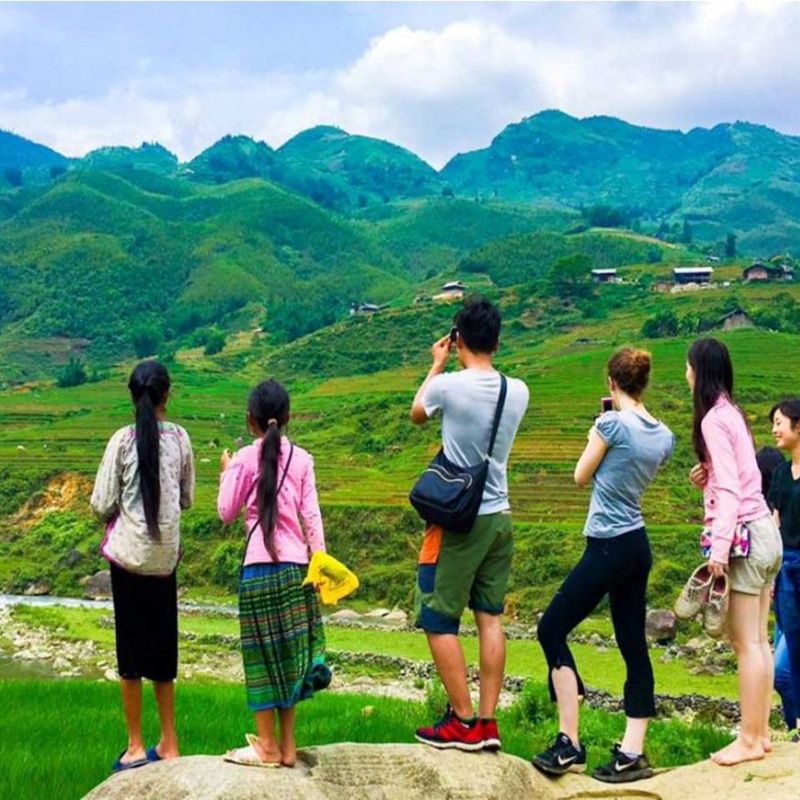
Ha Giang, being more remote and less developed in terms of tourism infrastructure, presents a different scenario in terms of accessibility and accommodation. The most common way to reach Ha Giang is by road from Hanoi, which takes approximately 6 to 8 hours by bus. This journey, although longer, is part of the adventure, offering glimpses of the changing landscape as one travels from the lowlands to the highlands. There are no train services directly to Ha Giang, making road transport the primary option.
Accommodation in Ha Giang is more about simplicity and authenticity, focusing on homestays and guesthouses rather than luxury hotels. These homestays offer a unique opportunity to experience the local way of life, with traditional meals and the chance to interact with host families. While the amenities may be basic compared to city standards, they are generally clean, and comfortable, and offer a deeper connection to the local culture and environment. For those seeking more privacy and comfort, there are a few hotels and guesthouses in Ha Giang City and major towns along the Ha Giang Loop.
Conclusion
Ha Giang vs Sapa, the choice between Ha Giang and Sapa depends largely on what you seek from your journey to Vietnam’s northern highlands. If your preference leans towards embarking on an adventurous road trip through some of the most dramatic and untouched landscapes, with opportunities for deep cultural immersion, then Ha Giang is your ideal destination. On the other hand, if you prefer a more accessible location with a blend of cultural experiences, easier trekking routes, and a wider range of accommodation options, Sapa will undoubtedly meet your expectations.
Both Ha Giang and Sapa offer unique windows into the natural beauty and cultural richness of Vietnam, each promising an unforgettable experience. Whether you choose the rugged terrains of Ha Giang or the terraced hills of Sapa, you are bound to be captivated by the charm and splendor of these northern gems.
Ha Giang vs Sapa FAQs
What is the best time of year to visit Ha Giang and Sapa?
The best time to visit Ha Giang is during the spring (February to April) and autumn (September to November) when the weather is pleasant, and the landscapes are at their most vibrant. While the ideal times to visit Sapa are also in the spring and autumn months. Additionally, visiting during the rice harvest season (around September) can be particularly scenic.
Are Ha Giang and Sapa suitable for family trips?
Yes, Sapa is very family-friendly with activities suitable for all ages, comfortable accommodations, and easy accessibility. While fascinating, Ha Giang can be more challenging for families, especially with young children, due to its rugged terrain and less developed tourism infrastructure.
Is it easy to travel between Ha Giang and Sapa?
Traveling directly between Ha Giang and Sapa is not particularly straightforward due to the challenging and mountainous terrain that separates them. The journey involves lengthy road travel, often taking around 6-8 hours (~250km), depending on the mode of transportation and road conditions.
Most travelers opt to return to Hanoi as a transit point when moving between these two destinations. This is due to better connectivity and more transportation options available from Hanoi to either Ha Giang or Sapa. While direct routes exist, they are more suited for experienced travelers, especially those comfortable with long-distance motorbiking or driving in mountainous areas. Therefore, while it is possible to travel directly between Ha Giang and Sapa, it requires careful planning and consideration of the time and effort involved.
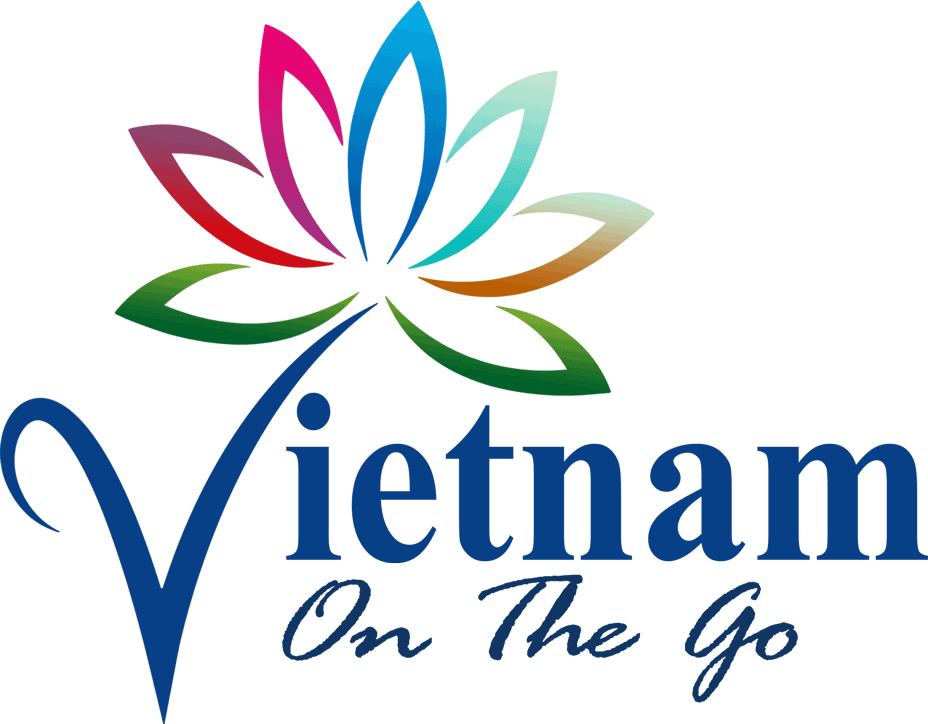
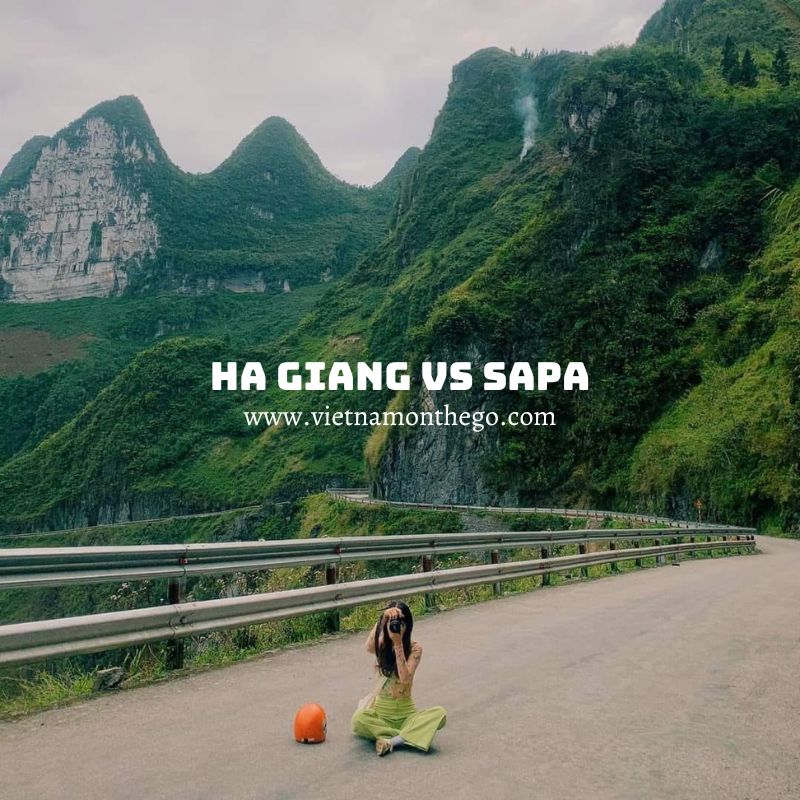
![[1 DAY] Trekking in Sapa Through Muong Hoa Valley - EASY Route](https://vietnamonthego.com/wp-content/uploads/2023/12/Trekking-in-Sapa-Through-Muong-Hoa-Valley-2-280x280.jpg)
![[1 DAY] Trekking in Sapa Through Highest Village](https://vietnamonthego.com/wp-content/uploads/2023/12/fansipan-hiking-tour-1-day-3-280x280.jpg)
![[1 DAY] Trekking In Sapa Through Muong Hoa Valley - HARD Route](https://vietnamonthego.com/wp-content/uploads/2023/12/Muong-Hoa-Valley-280x280.jpg)
![[2 DAYS 1 NIGHT] Sapa Trekking Tour with Local Guide](https://vietnamonthego.com/wp-content/uploads/2023/12/Sapa-Trekking-Tour-with-Local-Guide-9-280x280.jpg)
![[2 DAYS 1 NIGHT] Sapa Trekking with Homestay in Village - EASY Trekking](https://vietnamonthego.com/wp-content/uploads/2023/12/fansipan-hiking-tour-1-day-5-280x280.jpg)
![[3 DAYS 4 NIGHTS] Ha Giang Loop Motorbike Tour from Hanoi](https://vietnamonthego.com/wp-content/uploads/2024/03/ha-giang-loop-tour-6-300x300.jpg)
![[4 DAYS 5 NIGHTS] Ha Giang Loop Motorbike Tour from Hanoi](https://vietnamonthego.com/wp-content/uploads/2024/03/ha-giang-loop-tour-300x300.jpg)